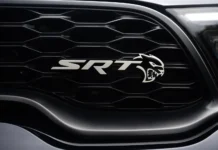We’re getting closer to EVs reaching parity with gasoline vehicles on “fill-up” time.
Part of the general reluctance surrounding electric car adoption is how long they take to charge. Virtually every automaker and market suppliers are tackling the issue, though Polestar and battery manufacturer StoreDot announced their progress using a prototype Polestar 5 sedan: a 10-80% recharge in just 10 minutes.
This particular prototype uses a special 77.0-kWh battery that incorporates StoreDot’s “Extreme Fast Charging” or XFC technology. Even though that’s not a huge pack, Polestar says it can be increased up to at least 100-kWh (in other words, the same battery capacity as a Tesla Model S), though charging rates between 310 kW and 370 kW enable the smaller pack to replenish 200 miles of range in that 10-minute time span.



“Time is one of life’s greatest luxuries,” said Polestar CEO Thomas Ingenlath of today’s announcement, “With this new technology, on longer journeys when drivers do stop they’ll be able to spend less time charging and be back on the road faster than before. In fact, that stop time will be more akin to what they experience with a petrol (gasoline) car today.”
And that last bit is the key. To wit, our cross-country road trip with the Hyundai Ioniq 5 comprised 9 hours of charging time, while this sort of charge rate would chop several hours off a similar journey. Even better, Polestar said it didn’t need to modify the cooling system (and thus add weight) to handle the higher charge rates. The pack uses “silicon-dominant cells” in its design, in part to even out the spiky nature of charging today’s commercially available battery chemistries, where charging rate heavily depends on when the driver decides to charge. Usually, the “meat” of the charge curve — where you actually can charge at 350 kW-plus — is between about 30% and 60%, before and after which speeds will drop off dramatically.
StoreDot’s pack as it exists in this prototype Polestar 5 is a fully drivable rig, and it’s compatible with existing DC fast-charging infrastructure without the need for special accommodations in a CCS or NACS charging station.
Of course, the charge rate is only one facet of the EV ownership experience. While some models currently on sale can feasibly charge up toa around 350 kW, it’s only within a limited part of the charging curve, and depends on charging infrastructure that can actually push all those electrons at the desired rate. Apart from the battery itself, there’s still a wide amount of variability between charging stations in different areas, unlike pumping gasoline, where the experience is roughly the same anywhere you go.
For the moment, Polestar says this is just a proof-of-concept. The technology “could be applied to future Polestar vehicles”, the company says, but it hasn’t outright committed to putting such packs into its production vehicles. If it does happen, it certainly won’t be in the immediate future, while the company’s recent financial troubles could further delay XFC’s rollout. (In late February, Polestar secured a nearly $1 billion lifeline from banks to keep going, while Chinese parent company Geely pledged to financially support its efforts as Volvo turns toward developing its own EVs.)


























